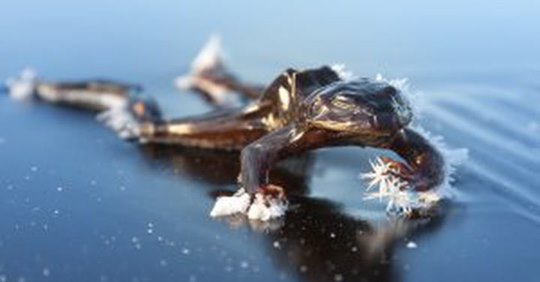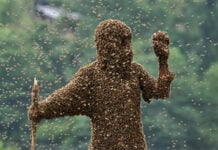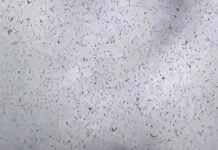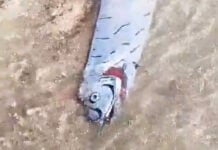Wow, our amazing Creator at work, awesome!!
I’ve always wondered what happened to them during the winter.

Some animals migrate to warmer climates for the winter and others burrow deep underground to sleep until spring.
Wood frogs instead seek cover under leaves near the surface, where they actually freeze and thaw with their surroundings, consistently and in cycles.
Yes, this frog’s blood allows it to be frozen (and alive) all winter.
Once the first ice crystals reach a wood frog, its skin freezes. The frog becomes hard and crunchy. When you drop it, it goes ‘clink.
Frozen Frogs
Special proteins in their blood, called nucleating proteins, cause the water in the blood to freeze first. This ice, in turn, sucks most of the water out of the frog’s cells.
At the same time the frog’s liver starts making large amounts of glucose which packs into cells and props them up.
The concentrated sugar solution helps prevent additional water from being pulled out of the frog’s cells, which can destroy them.
There is no ice inside the cells. It’s just extremely dehydrated, all shrunk down osmotically and full of massive amounts of sugar.
Inside the cells there’s a thick sugary syrup, while outside the cells all the water is frozen.
And it can stay like that apparently, no beating heart or brain activity or anything, until you decide to thaw it.
When temperatures warm and the ice melts, the frogs thaw, water slowly flows back into the cells, blood starts flowing again, and the frog revives.
Once the heart starts, it pumps the blood around the animal and the animal starts to revive, then it starts to gulp, then it starts to breathe, then it starts to hop away. So it takes a little while to reactivate after you’ve been frozen down.
No Nucleatin in Humans
Humans lack these nucleating proteins. So when our skin freezes, we get frostbite, which lethally sucks all the water out of our cells and causes them to collapse.
And that even if you take the ice away. All the cells are broken because you haven’t made all that sugar.
Studying such a freeze-thaw cycle could help doctors finding a technique to aid human organ transplants. Currently doctors only have hours to get a donated organ into a living patient before the organ becomes too damaged.
Freezing organs isn’t an option, as the cells dehydrate.
The molecular mechanics that allow wood frogs to freeze and thaw could help doctors to aid human organ transplants. [NatGeo]












